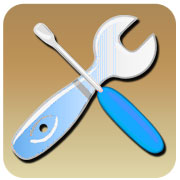
If there’s one area of complication in any direct-current, hobbyist tech project, it’s wire. What gauge of wire should you use? How should you terminate it? How can you join wire on a budget?
You’ll encounter issues like this in any DC-current application project, whether you’re working on audioamplifiers or other after-market automotive accessories, solar equipment or amateur radios.
Read on if you’d like to junk unprofessional electrical insulation tape and guesswork, and come togrips with wire in the DC environment.
Understand AWG, Amps and Distance
American Wire Gauge, or AWG, has a relationship to voltage, amperage anddistance.
AWG is a standardized measurement for electrical wire diameter. The larger the AWGnumber, the smaller the wire diameter and less amperage it can carry over longerdistances. The lower the AWG number, the larger the wire diameter is, and the greaterthe distance and amperage that can safely be conducted by the wire.
For example, 12 AWG wire — a commonly used automotive accessory wire and homeentertainment speaker system wire — will be labeled “12 AWG,” “#12” or “12 ga” — or something similar.
At room temperature in a 12-volt power source application like solar,for example, 12 AWG annealed copper wire — refined as you’d get at an electronics or automotive partsstore — can be used to carry 2 amps for 112 feet one-way; 4 amps for 56 feet; 8 amps for 28 feet and so on.
Increase wire diameter (reducing AWG gauge) to carry more load over longerdistances. Decrease wire diameter for less load and shorter distances. Thicker 6 AWGwire, for example, can carry 2 amps 456 feet. Thinner 14 AWG wire can carry 2 amps70 feet.
These are rule-of-thumb numbers — they are not carefully engineered to factor in airconvection, thermal conductivity and other elements that could be taken into account ifyou wanted to.
Voltage Drop also comes into play over distance. Using the above examples, the voltagedrop will be less than 1 volt — likely acceptable. Increasing wire length will increasevoltage drop.
Joining and Terminating Wires in a 12-Volt Project
In the U.S., wire connecters are also rated in AWG. Connectors use a diameter color-coding system.
Yellow fasteners are used for 10-12 AWG; blue for 14-16 AWG, and red for 18-22 AWG. These colors also match up with crimp points on a crimp tool.
Tip: Wire uses red color-coding for positive and black for negative.
Practice Joining Wires
Join two pieces of 12 AWG wire with an insulated, solderless butt connector in theappropriate color — yellow.
Supplies: Fry’s Electronics sells a 180-piece terminal wiring kit online with all thepieces you might need. It also sells crimpers and wire strippers.
Step 1
Strip about a quarter-inch of sheath from each wire with a wire stripper, exposing copperstrands. Twist the strands on one piece of wire with forefinger and thumb forming a solidmass.
Then insert the wire into one end of the butt connector until the wire sheath buttsup against the connector flange and there’s no copper exposed.
Step 2
Squeeze the wire-inserted butt connector end ahead of the flange with a crimp tool untilthe connector is compressed onto the twisted, hidden part of the wire. Give the wire agood yank — it shouldn’t come apart from the butt connector. Then repeat with the otherpiece of wire.
Follow the same technique to add ring connectors and spade connectors to the endsof wires. These kinds of connectors are used for affixing wire to screw terminalsprofessionally.
Heat Shrinking
Obtain a selection of heat shrink tubing and a heat tool for creating ultra-professional,weather-tight results.
Supplies: Again, Fry’s sells both a heat tool and a boxed, tubing selection kit.
Step 1
Slide a piece of flexible polyolefin heat shrink tubing along the wire before crimping thebutt connector or ring connector.
Use a piece of tube about double the diameter of the wire with connector.
Step 2
Add the connector and make the crimp. Then slide the tubing up over the crimp. Heatthe tubing with the heat tool by waving the wire and tube assemblage slowly over the toolmouth at a distance of more than 3 inches.
The tube will shrink onto the connector and wireassemblage, producing neat, highly professional results.
Want to Ask a Tech Question?
Is there a piece of tech you’d like to know how to operate properly? Is there a gadget that’s got you confounded? Please send your tech questions to me, and I’ll try to answer as many as possible in this column.
And use the Talkback feature below to add your comments!





















































